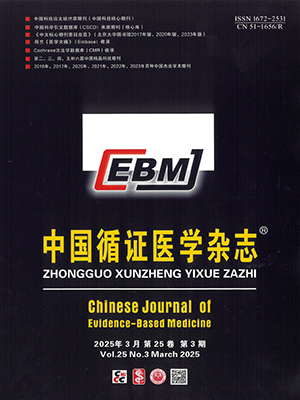| 1. |
Malfertheiner P, Megraud F, O'Morain CA, et al. Management of Helicobacter pylori infection——the Maastricht IV/Florence Consensus Report. Gut, 2012, 61(5): 646-664.
|
| 2. |
Rokkas T, Sechopoulos P, Pistiolas D, et al. The relationship of Helicobacter pylori infection and colon neoplasia, on the basis of meta-analysis. Eur J Gastroenterol Hepatol, 2013, 25(11): 1286-1294.
|
| 3. |
Zuniga R, Bautista J, Sapra K, et al. Combination of Triple Therapy and Chronic PPI Use May Decrease Risk of Colonic Adenomatous Polyps in Helicobacter pylori Infection. Gastroenterol Res Pract, 2015(Epub 2015 May 12).
|
| 4. |
Abbass K, Gul W, Beck G, et al. Association of Helicobacter pylori infection with the development of colorectal polyps and colorectal carcinoma. South Med J, 2011, 104(7): 473-476.
|
| 5. |
Robertson DJ, Sandler RS, Ahnen DJ, et al. Gastrin, Helicobacter pylori, and colorectal adenomas. Clin Gastroenterol Hepatol, 2009, 7(2): 163-167.
|
| 6. |
孙自勤, 刘晓峰. 肠道病学. 济南: 山东科学技术出版社, 2005: 1126.
|
| 7. |
中华医学会消化病学分会幽门螺杆菌学组. 第四次全国幽门螺杆菌感染处理共识报告. 中华内科杂志, 2012, 51(10): 832-837.
|
| 8. |
Imperiale TF, Wagner DR, Lin CY, et al. Risk of advanced proximal neoplasms in asymptomatic adults according to the distal colorectal findings. N Engl J Med, 2000, 343(3): 169-174.
|
| 9. |
房静远. 中国大肠肿瘤筛查、早诊早治和综合预防共识意见. 胃肠病学和肝病学杂志, 2011, (11): 979-995.
|
| 10. |
Liou JM, Lin JW, Huang SP, et al. Helicobacter pylori infection is not associated with increased risk of colorectal polyps in Taiwanese. Int J Cancer, 2006, 119(8): 1999-2000.
|
| 11. |
Oset P, Jasińska A, Szcześniak P, et al. Analysis of serum gastrin levels in patients with adenomatous polyps of the colon. Pol Merkur Lekarski, 2009, 26(155): 458-461.
|
| 12. |
Smith AM, Watson SA. Gastrin and gastrin receptor activation: an early event in the adenoma-carcinoma sequence. Gut, 2000, 47(6): 820-824.
|
| 13. |
Kim SH, Margalit O, Katoh H, et al. CG100649, a novel COX-2 inhibitor, inhibits colorectal adenoma and carcinoma growth in mouse models. Invest New Drugs, 2014, 32(6): 1105-1112.
|
| 14. |
Temraz S, Mukherji D, Shamseddine A, et al. Potential targets for colorectal cancer prevention. Int J Mol Sci, 2013, 14(9): 17279-17303.
|
| 15. |
Sierra JC, Hobbs S, Chaturvedi R, et al. Induction of COX-2 expression by Helicobacter pylori is mediated by activation of epidermal growth factor receptor in gastric epithelial cells. Am J Physiol Gastrointest Liver Physiol, 2013, 305(2): G196-G203.
|
| 16. |
郑荣娟, 胡爱萍, 李海英, 等. 结肠息肉、结肠癌患者HP感染与血浆胃泌素-17及环氧合酶-2的相关性. 天津医药, 2012, 40(7): 734-735.
|
| 17. |
张万岱, 胡伏莲, 萧树东, 等. 中国自然人群幽门螺杆菌感染的流行病学调查. 现代消化及介入诊疗, 2010: 15(5): 265-270.
|
| 18. |
陈镇, 荣亮, 侯慧, 等. 152例结直肠肿瘤患者幽门螺杆菌感染情况分析. 中华消化杂志, 2014, 34(10): 666-670.
|
| 19. |
Brim H, Zahaf M, Laiyemo AO, et al. Gastric Helicobacter pylori infection associates with an increased risk of colorectal polyps in African Americans. BMC Cancer, 2014, 14: 296.
|
| 20. |
阮玉凤, 万霜, 孙璟, 等. 幽门螺杆菌感染与结直肠息肉发生的关系. 国际消化病杂志, 2014, 34(05): 344-347.
|
| 21. |
张雪梅, 刘丽娜, 马红霞, 等. 幽门螺杆菌、高胃泌素血症对结肠腺瘤形成的作用. 世界华人消化杂志, 2010. 18(13): 1390-1394.
|




